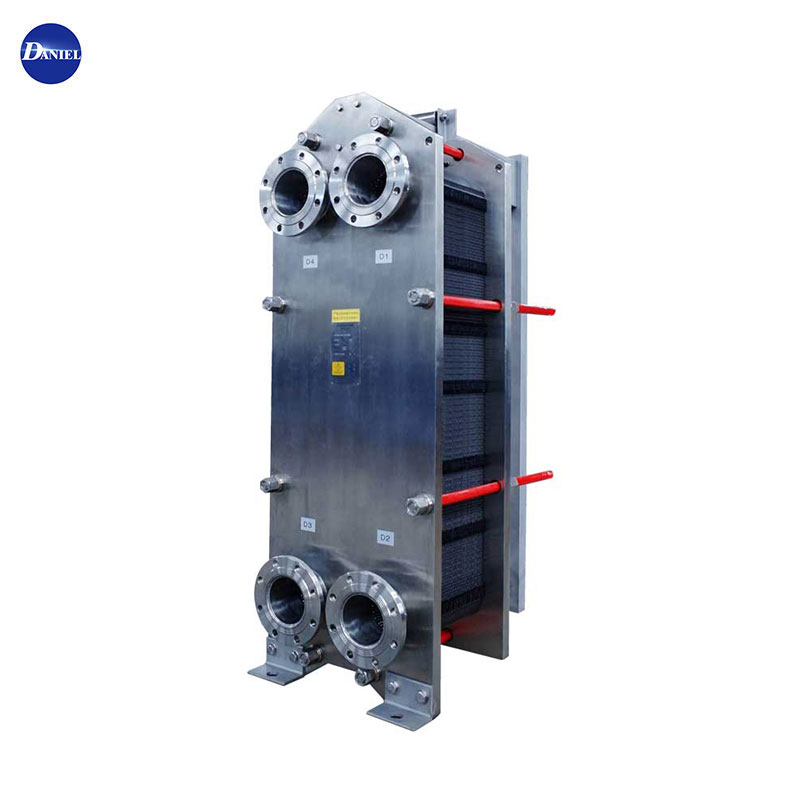
 English
English  Español
Español Português
Português русский
русский Français
Français 日本語
日本語 Deutsch
Deutsch tiếng Việt
tiếng Việt Italiano
Italiano Nederlands
Nederlands ภาษาไทย
ภาษาไทย Polski
Polski 한국어
한국어 Svenska
Svenska magyar
magyar Malay
Malay বাংলা ভাষার
বাংলা ভাষার Dansk
Dansk Suomi
Suomi हिन्दी
हिन्दी Pilipino
Pilipino Türkçe
Türkçe Gaeilge
Gaeilge العربية
العربية Indonesia
Indonesia Norsk
Norsk تمل
تمل český
český ελληνικά
ελληνικά український
український Javanese
Javanese فارسی
فارسی தமிழ்
தமிழ் తెలుగు
తెలుగు नेपाली
नेपाली Burmese
Burmese български
български ລາວ
ລາວ Latine
Latine Қазақша
Қазақша Euskal
Euskal Azərbaycan
Azərbaycan Slovenský jazyk
Slovenský jazyk Македонски
Македонски Lietuvos
Lietuvos Eesti Keel
Eesti Keel Română
Română Slovenski
Slovenski मराठी
मराठी Srpski језик
Srpski језик
How to use Plate Heat Exchanger?
2023-07-22
Using a plate heat exchanger involves several steps, from installation to operation and maintenance. Plate heat exchangers are efficient devices for transferring heat between two fluids and are commonly used in HVAC systems, industrial processes, and various other applications.
Here's a general guide on how to use a plate heat exchanger:
Installation:a. Select the appropriate location: Choose a suitable location for the heat exchanger, considering accessibility, space, and fluid flow requirements.
b. Mounting: Securely mount the plate heat exchanger on a stable surface or support structure using appropriate bolts and hardware.
c. Piping connections: Connect the fluid inlet and outlet pipes to the corresponding ports on the heat exchanger. Ensure proper alignment and use gaskets to prevent leaks.
Pre-commissioning:
a. Inspection: Inspect the plate heat exchanger for any damage or defects. Check that the plates are clean and free from debris.
b. Tightening: Check all connections and bolts, and ensure they are properly tightened to avoid leaks during operation.
Start-up:
a. Flow direction: Verify the correct flow direction of both fluids. Plate heat exchangers are designed for counter-flow or parallel flow operation, depending on the application.
b. System purging: Remove any air or gases trapped in the system to ensure efficient heat transfer. This may involve bleeding air from the system using vents or purging valves.
Operation:
a. Monitoring: Continuously monitor the inlet and outlet temperatures and flow rates of both fluids to ensure the heat exchanger is operating efficiently.
b. Adjustments: Depending on the requirements, adjust the flow rates or temperature settings to achieve the desired heat transfer performance.
Maintenance:
a. Cleaning: Regularly clean the plates to prevent fouling or scaling, which can reduce heat transfer efficiency. Use appropriate cleaning solutions or procedures as recommended by the manufacturer.
b. Gasket replacement: Over time, gaskets may wear out and require replacement. Inspect gaskets periodically and replace them when necessary.
c. Inspection: Conduct routine inspections to check for any signs of corrosion, wear, or damage. Address any issues promptly to avoid further damage and maintain optimal performance.
Shutdown:
a. Proper shutdown procedure: If you need to shut down the plate heat exchanger temporarily, follow the manufacturer's recommended procedure to ensure a safe and efficient start-up afterward.
Always refer to the manufacturer's guidelines, specifications, and operating manuals for your specific plate heat exchanger model. Different plate heat exchangers may have unique considerations and requirements, and following the manufacturer's recommendations will help ensure safe and efficient operation.


Previous:The function of Plate Heat Exchanger
X
We use cookies to offer you a better browsing experience, analyze site traffic and personalize content. By using this site, you agree to our use of cookies.
Privacy Policy





